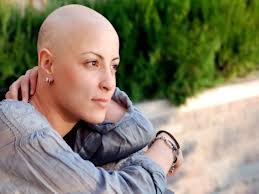This information represents the views of the doctors and nurses serving on the American Cancer Society’s Cancer Information Database Editorial Board. These views are based on their interpretation of studies published in medical journals, as well as their own professional experience.
The treatment information in this document is not official policy of the Society and is not intended as medical advice to replace the expertise and judgment of your cancer care team. It is intended to help you and your family make informed decisions, together with your doctor.

Your doctor may have reasons for suggesting a treatment plan different from these general treatment options. Don’t hesitate to ask him or her questions about your treatment options.
This section starts with general comments about the types of treatments used for breast cancer. This is followed by a discussion of the typical treatment options based on the stage of the cancer (and a small section on breast cancer treatment during pregnancy).
General types of treatment for breast cancer
The main types of treatment for breast cancer are:
- Surgery
- Radiation therapy
- Chemotherapy
- Hormone therapy
- Targeted therapy
- Bone-directed therapy
- Treatments can be classified into broad groups, based on how they work and when they are used.
Local versus systemic therapy
Local therapy is intended to treat a tumor at the site without affecting the rest of the body. Surgery and radiation therapy are examples of local therapies.
Systemic therapy refers to drugs which can be given by mouth or directly into the bloodstream to reach cancer cells anywhere in the body. Chemotherapy, hormone therapy, and targeted therapy are systemic therapies.
Adjuvant and neoadjuvant therapy
Patients who have no detectable cancer after surgery are often given additional treatment to help keep the cancer from coming back. This is known as adjuvant therapy. Doctors believe that even in the early stages of breast cancer, cancer cells may break away from the primary breast tumor and begin to spread. These cells can’t be felt on a physical exam or seen on x-rays or other imaging tests, and they cause no symptoms. But they can go on to become new tumors in nearby tissues, other organs, and bones. The goal of adjuvant therapy is to kill these hidden cells. Both systemic therapy (like chemotherapy, hormone therapy, and targeted therapy) and radiation can be used as adjuvant therapy.
Most, but not all, patients benefit from adjuvant therapy. How much you might benefit depends on the stage and characteristics of the cancer and what type of surgery you had. Generally speaking, if the tumor is larger or the cancer has spread to lymph nodes, it is more likely to have spread through the bloodstream, and you are more likely to see a benefit. But there are other features, some of which have been previously discussed, that may determine if a patient should get adjuvant therapy. Recommendations about adjuvant therapy are discussed in the sections on these treatments and in the section on treatment by stage.
Some patients are given treatment, such as chemotherapy or hormone therapy, before surgery. The goal of this treatment is to shrink the tumor in the hope it will allow a less extensive operation to be done. This is called neoadjuvant therapy. Many patients who get neoadjuvant therapy will not need adjuvant therapy, or will not need as much.
